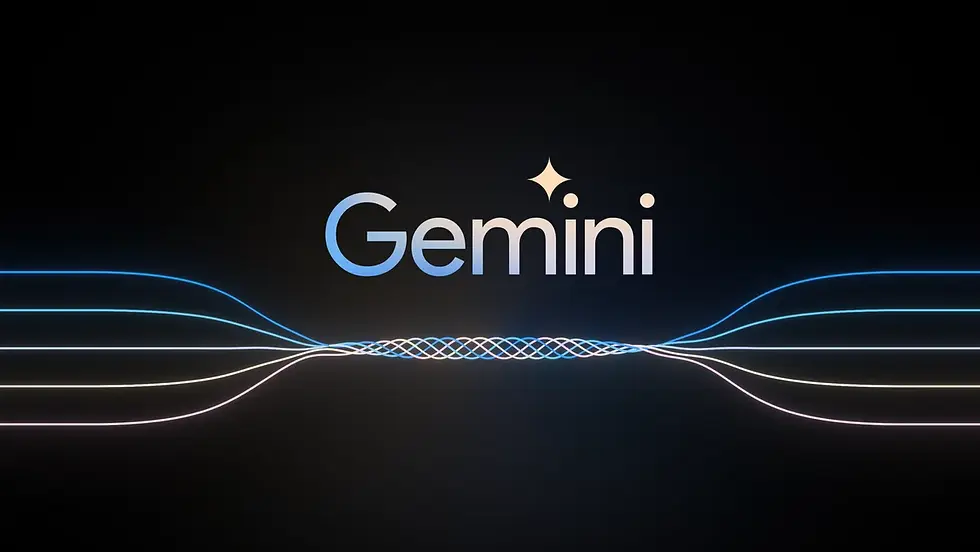Part 1: Exploring the Variants of Google's Gemini Models: An Overview
- Revanth Reddy Tondapu
- Jun 17, 2024
- 2 min read

Hello everyone!
In this blog post, we will explore various variants of Google's Gemini models. These models are designed to cater to different AI tasks, from general performance to highly complex functions, including coding, reasoning, and multimodal capabilities. We'll dive into the architecture and some essential information you need to know about these models.
Introduction to Gemini Models
Google's Gemini models come in several versions, each optimized for specific tasks. When the Gemini model was initially released, there were three primary versions: Ultra, Pro, and Nano.
Gemini Ultra
Gemini Ultra is Google's largest model designed for highly complex tasks. The Ultra model is optimized for high-quality output across various complex tasks, such as coding and reasoning, and supports multiple languages. It is ideal for applications requiring robust performance in intricate scenarios.
Gemini Pro
Gemini Pro is Google's best model for general performance across a wide range of tasks. It is suitable for building most applications, offering balanced capabilities for text, vision, and more. The Pro version has multiple variants, including Gemini Pro 1.0 and the latest Gemini Pro 1.5. These variants provide free API access for a limited number of requests, making them accessible for developers to experiment with.
Key Features of Gemini Pro 1.5:
Context Window: 2 million tokens, the longest context window of any large-scale foundation model.
Multimodal Capabilities: Processes audio, video, text, images, and more.
High Accuracy: Near-perfect recall on long context retrieval tasks.
Gemini Nano
Gemini Nano is the most efficient model for on-device tasks. It is optimized for providing quick responses on devices with or without a data network. This model is perfect for mobile apps, edge devices, and IoT applications.
Key Features of Gemini Nano:
Quick Responses: Optimized for speed and efficiency on-device.
Versatile Tasks: Supports image understanding, speech transcription, text summarization, and more.
Gemini Flash
Recently announced at Google I/O 2024, Gemini Flash is a lightweight model optimized for speed and efficiency. It features multimodal reasoning and a breakthrough context window of up to 1 million tokens. This model is designed for applications requiring fast and cost-efficient processing.
Key Features of Gemini Flash:
Speed and Efficiency: Lightweight and fast, suitable for cost-efficient applications.
Multimodal Reasoning: Processes various data types, including text, images, and more.
Performance Metrics
The performance of Gemini models is measured using various benchmarks and metrics. Here are some key performance metrics:
General Benchmarks: Measured using MLU (Machine Learning Utility).
Code Generation: Evaluated using datasets like HumanEval.
Mathematical Reasoning: Assessed with challenging math problem datasets.
Domain-Specific Tasks: Performance in tasks written by domain experts.
Accuracy Comparison
The table below summarizes the accuracy of different Gemini models:
Model | Accuracy |
Gemini 1.0 Pro | High |
Gemini 1.0 Ultra | Highest |
Gemini 1.5 Pro | Higher than 1.0 |
Gemini 1.5 Flash | High |
Gemini 1.5 Pro has shown improved accuracy over Gemini 1.0 Ultra, making it a robust choice for various applications.
Getting Started with Gemini Models
To start using Gemini models, you need an API key. In the next post, we will guide you through creating an API key and accessing the Google API Studio playground. This will enable you to experiment with different Gemini models and build your applications.
Stay tuned for the next post, where we will dive into the practical aspects of working with Gemini models. Thank you for reading, and see you in the next post!
Comments